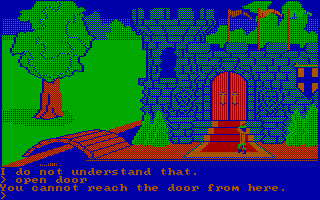Reply 300 of 457, by NewRisingSun
In 320x200x4 mode, the displayed color is:
displayed color = (pixel color) SHL 1 OR (palette bit)
for colors != 0.
So, the two four-color palettes are not the result of an obvious design choice but just a result of said relationship. "Useful" combinations such as the ones described above would essentially require some sort of lookup table, probably stored in PROM, which increases cost.
I'm sure that originally, IBM didn't even think of a 4-color mode but expected the CGA to do 16 colors in text and 320x200 graphics mode, and monochrome in 640x200 mode; I think the 4-color mode was just a compromise made to save on expensive RAM (320x200x16 requires 32k RAM, the CGA has 16k). I basically consider the PCjr, graphics-wise,to be what the CGA should have been. They would just have needed to offer a 16k RAM upgrade for the CGA (and prepare the CGA for it) instead of requiring people to buy the more expensive EGA with its slow and complicated planar graphics modes and the even more expensive ECD monitor (although I think you can also use CGA monitors with the EGA if you set some sort of DIP switch, right?)
The fact that the 5150 was supposed to be a "business computer" is no excuse; even business people might want to do charts with more than 2 non-b/w colors.
